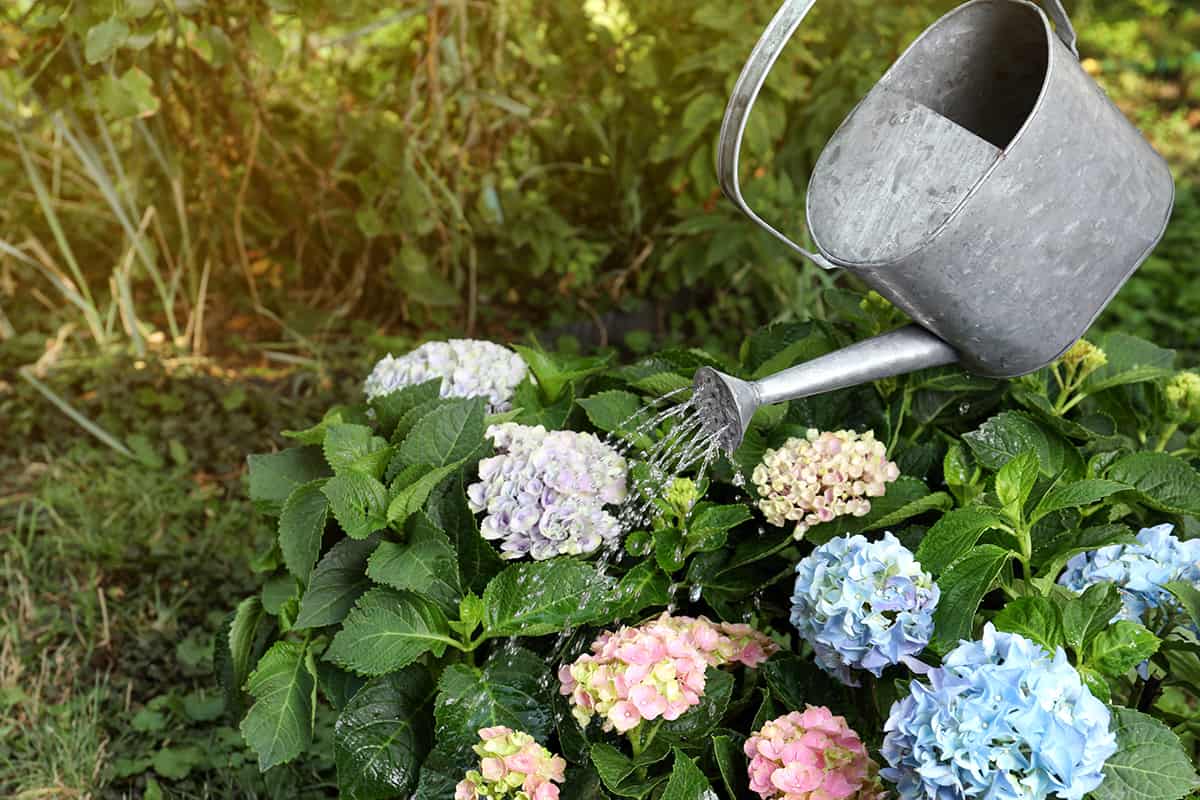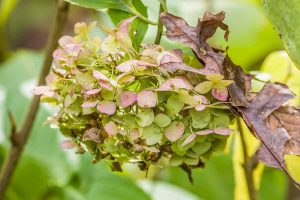If you’re wondering whether or not hydrangea plants like to be grown in moist soil, the clue is in the name. ‘Hydra’ is a Latin word that can be translated to mean ‘water’.
As a water-loving, flowering species, many people assume that hydrangeas should be watered every day through summer, but this is actually not the best practice. Instead, water your hydrangea deeply three times each week. This will help the plant to develop a strong root system, resulting in an abundance of beautiful flowers.
Table of Contents
How Often Should You Water Hydrangea Plants?
Hydrangea plants need to be grown in soil that is consistently moist, however, due to the fact that they have shallow root systems, daily watering is not preferential. If you give your hydrangea a little water each day, the water won’t seep into the depths of the soil, and instead, only the top layer of the soil will remain consistently moist.
This will encourage the roots of the hydrangea to remain near the surface of the ground, rather than traveling deeper downwards. In the long run, this will negatively affect the plant, since it won’t develop deep and strong roots. Instead, watering your hydrangea generously three times each week will ensure the plant gets the moisture it needs while encouraging roots to bury themselves further in the ground.
Considerations for Watering Hydrangeas
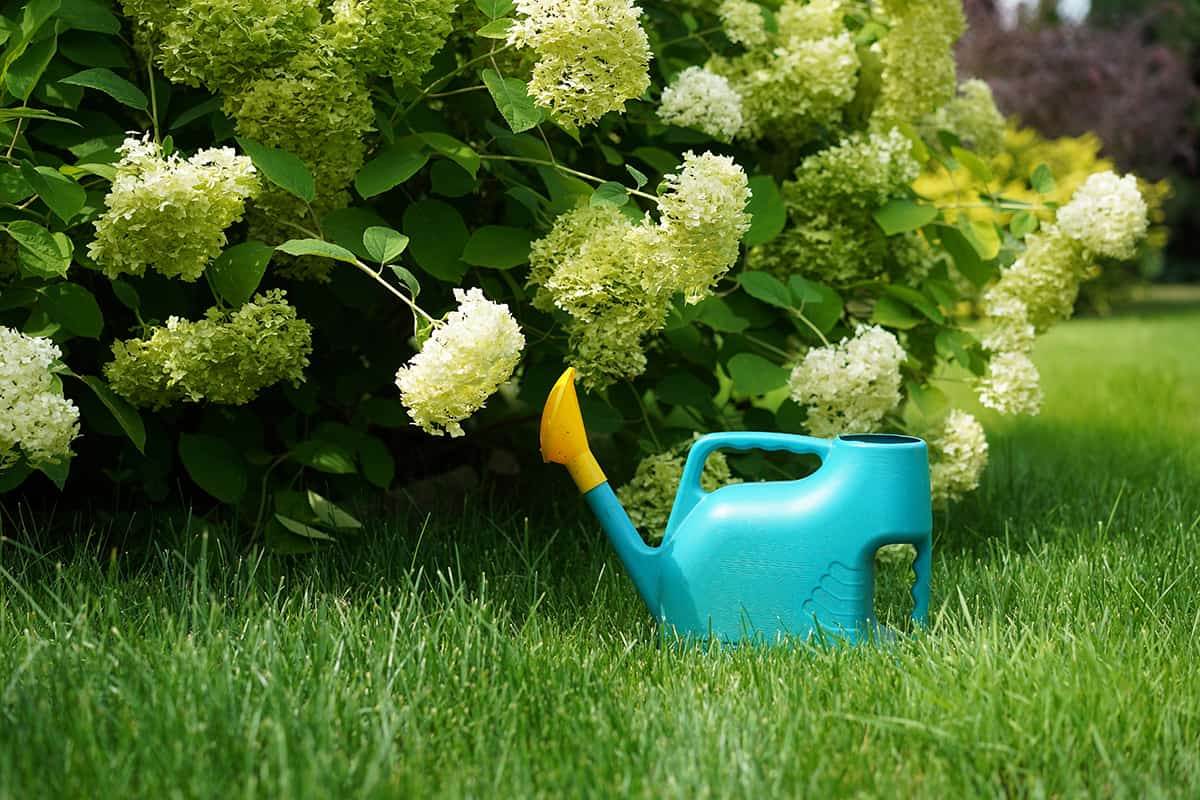
The general guidance from hydrangea experts is to water these plants deeply three times per week, however this is not a hard and fast rule, since various things are going to affect each individual hydrangea and its moisture needs.
Climate
Hydrangeas are suitable for growing in quite a wide range of climates, with some hydrangeas growing in USDA hardiness zones as low as 3, and up to zone 9. The type of climate you are growing your hydrangea is going to affect how often the plant needs to be watered.
In a hot climate, water is going to evaporate more quickly from the soil, and therefore there isn’t going to be as much moisture available in the soil for the roots of the hydrangea.
By comparison, water evaporation isn’t going to be as great in cooler climates. Hydrangeas growing in hotter climates will also have higher water needs, so you may find you need to water these as often as four or five times a week, while cool climate hydrangeas may be fine with water twice a week.
Species
The type of hydrangea you are growing will affect how much water it requires. Oakleaf hydrangeas (Hydrangea quercifolia) are known to be the most drought-tolerant of all hydrangea species, however, they still prefer to be grown in moist soils. Smooth hydrangeas (Hydrangea arborescens) have higher water needs, so these may require additional moisture through summer.
Light
Hydrangeas grown in the sun will need more water than those grown in partial shade or full shade since the sun will help water to evaporate more quickly.
Age
When hydrangeas are well established they tend to be able to cope better with a lack of moisture in their soil because their root systems are better developed which means they can seek out sources of moisture deep in the ground. Young hydrangeas will have roots close to the surface of the soil, so they may need to be watered more frequently in their first and second years.
Season
The season, of course, will alter how much water a hydrangea needs. In spring and summer when these plants are in their phase of rapid growth, they need plenty of moisture. In fall and winter, they enter a period of rest, and can usually survive on rainwater alone during this time.
How to Check if a Hydrangea Needs More Water?
If a hydrangea looks wilted then this can be an indication that it isn’t getting enough water, however, this is not the best way to check if the plant needs more water. In hot climates, especially during summer afternoons, even healthy hydrangeas which are growing in moist soil can begin to wilt from the heat and humidity.
It would be incorrect to assume that more moisture is needed. Instead, dip your finger into the soil and check for moisture. If you cannot feel any moisture at a depth of 3 to 4 inches, then the hydrangea needs water.
Are Hydrangeas Drought Tolerant?
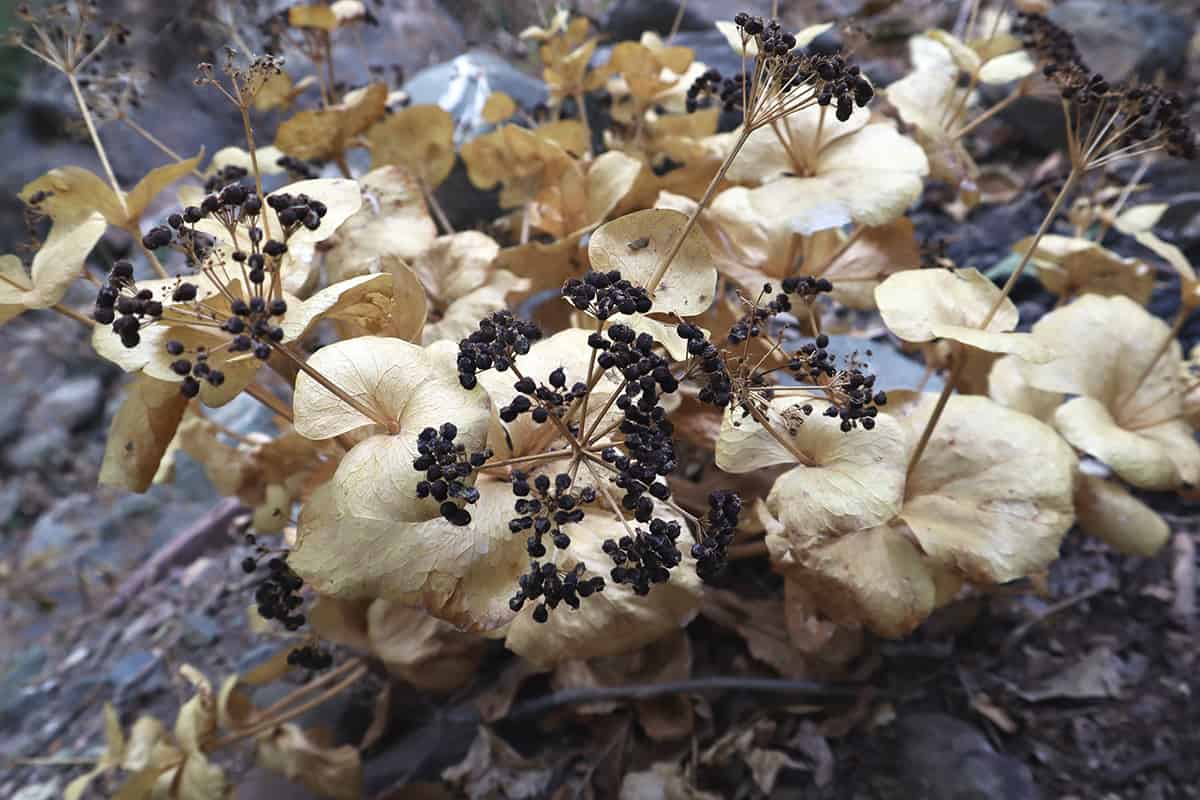
Most hydrangeas are not tolerant of drought, though the Oakleaf hydrangea can withstand short periods of drought. It is best to avoid intentionally depriving a hydrangea of moisture because it can weaken the plant, making it more susceptible to disease and pest infestations, and also shortening the expected lifespan.
When is the Best Time to Water a Hydrangea?
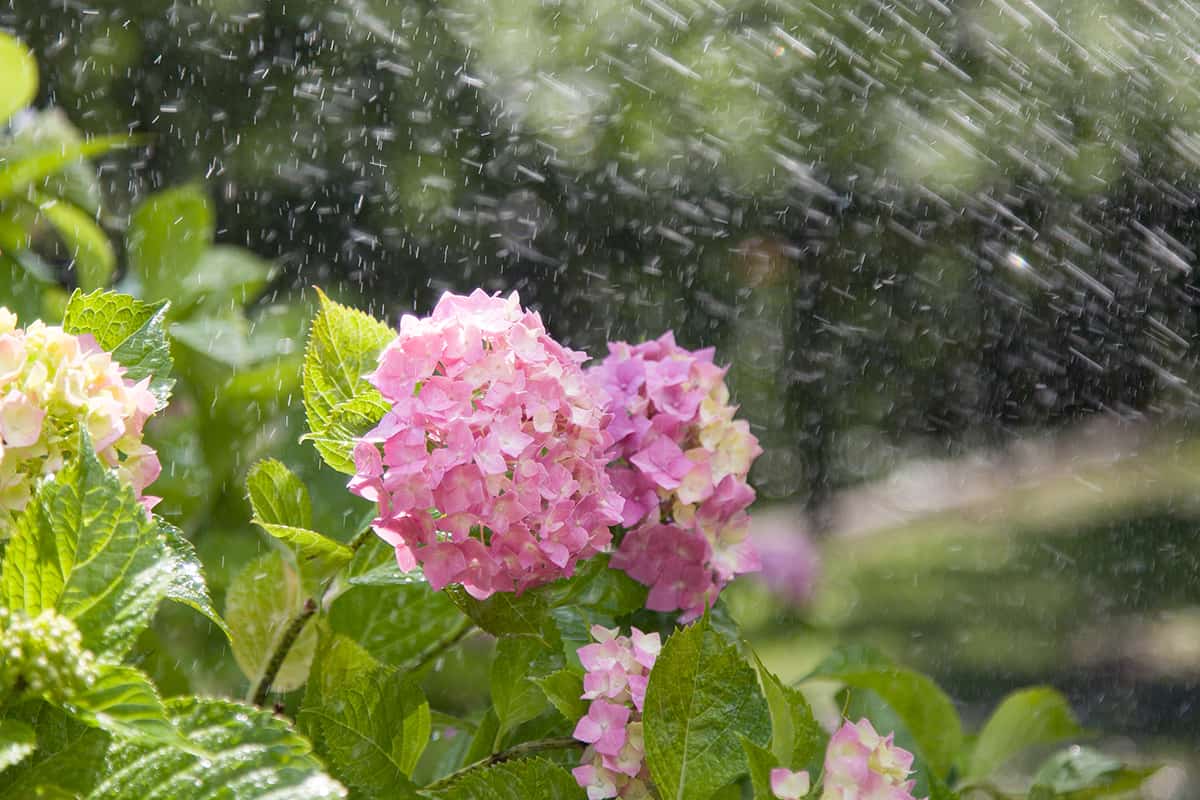
Hydrangeas should be watered in the early morning or evening. This is because these are the coolest times of the day, so the water will not evaporate from the soil too quickly, giving the roots a better chance of absorbing the moisture.
Always water your hydrangea at soil level, because the flowers can wilt if they get too wet, and wet leaves and blooms can encourage fungal disease to form.
Can You Water a Hydrangea Too Much?
Hydrangeas thrive in moist soils and suffer in dry soils, however, wet soils are also not tolerated by these plants. Soils that are soggy or waterlogged will cause the flowers of the plant to wilt, and it can also lead to root rot which will result in the eventual death of the hydrangea.
The best way to ensure you don’t overwater a hydrangea is to keep a check on the condition of the soil. If water is pooling around the surface of the soil at the base of the plant, don’t add more water until this has been absorbed. You should grow hydrangeas in sandy or loamy soil, as this will help to prevent the soil from becoming wet.
In these well-draining soils, any excess water will drain away from the roots, and therefore not cause an issue. Avoid clay soils that can retain too much water.
